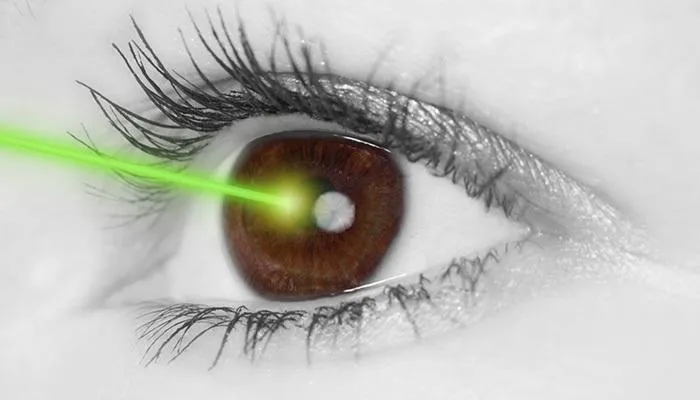What is Cataract?
June 9, 2021
- Natural lens inside our eye, which is crystal clear by birth, is very important as it helps in focusing the image. This lens grows with age and eventually becomes thick and rigid which causes difficulty viewing near objects especially after age of forty, requiring use of reading glasses, which is known as Presbyopia.
- Along with age the natural lens also starts becoming white/gray/brown, like our graying of our hair with age, which is known as Cataract
Types of Cataract:
- There are many types of Cataract- like Senile Cataract (with age) which is most commonly seen, Congenital cataract (by birth), Developmental Cataract (developed and progresses with growth), Traumatic Cataract (post injury to eye), Secondary Cataract (uveitis, drugs like steroids, radiation exposure, diabetes etc.).
- Other risk factors include- UV radiation (sun light), Smoking, alcohol consumption, high myopia, family history etc.
- Cataract is also classified depending on position of whitening of lens like- Nuclear Cataract, Cortical cataract, Subcapsular Cataract, Capsular Cataract, Anterior or Posterior Polar Cataract etc. Person can have one or multiple type of it and depending on that symptoms can vary.
Symptoms of Cataract:
- Anyone above 50 years of age, will usually start developing “Age induced”/” Senile” Cataract.
- Cataract generally progresses very slowly, so generally people don’t realize that they have Cataract. Most of the time it is diagnosed in a routine examination as the patient is asymptomatic. Because of this it is important to get a routine examination once a year after the age of 40 years.
- Because of whitening of the lens, patient can have cloudy/foggy/hazy/blurred vision and sometime the intensity can vary with time depending on the type of cataract. They generally feel as if they are seeing through a mist or very thin curtain.
- They also see scattering of light especially at night, causing increasing difficulty driving at night. Also due to the glare of bright light it is difficult to see fine objects.
- Because of opacity it filters out blue light shades, causing difficulty in differentiating blue/black or other darker hues, causing decrease in color perception and contrast sensitivity.
- In nuclear cataract, the patient develops progressive myopia, causing sudden improvement in near vision also known as “second site”
- Double or multiple visions especially in cortical type of cataract.
- If not treated in time then it can lead to serious complications and patients can possibly loss vision.
Treatment of Cataract:
- Cataract is treated by surgery as there is no medical treatment available.
- When a cataract is in an early stage, by taking care of three important measures, cataract progression can slowed/delayed-
- Healthy food especially rich in antioxidants to delay oxidative changes in the body including Cataract.
- Wearing UV protective glasses, as studies have shown that those who are exposed to sunlight have higher chances of developing cataract earlier.
- Consulting an Ophthalmologist for evaluation and advice.
- To evaluate the eye in detail especially for Cataract, Slit lamp Examination and dilated eye examination by expert Cataract Surgeon is very important.
- When it is difficult to improve vision with glasses or if there is frequent change in the glasses or there is significant effect on day to day life because of poor quality vision induced by cataract- then it is advised to undergo Cataract surgery.
Basics of Cataract Surgery:
- The natural lens is removed and intraocular lens is implanted with the capsular bag which is left inside.
- If intraocular lens is not implanted then patient will get around +10DS power after surgery, which is very thick
- Intraocular lens has power which is calculated before surgery to make patient see distant almost without major glass number.
Surgical Options:
- Phacoemulsification- most commonly performed small incision (1.2mm – 3.5mm) suture less surgery
- SICS- suture less surgery but incision is little larger than phacoemulsification, less expensive option
- ECCE- Old technique with suture
- ICCE, couching – obsolete technique
- Femtosecond laser assisted Cataract surgery- some steps of surgeries are performed with femtosecond laser, especially useful in some of the complicated cataract to avoid some serious complications.
Types of Intraocular Lens (IOL): There are different lenses available with different material and ability to focus.
Types of Intraocular lens with different ability to focus:
- Monofocal Intraocular Lens: When Monofocal IOL is implanted, patient can see distant vision with or without minor power, but for reading/near or computer work, they need to wear glasses.
- Multifocal Intraocular Lens: When Multifocal Intraocular lens is implanted, patient can see distant and reading almost without glass. Again, there are different types- Bifocal, Trifocal lenses depending on their focal length to focus for near.
- Toric Intraocular Lens: All those patients, who have astigmatism, it can also be corrected by implanting Toric IOL. It can be again, Monofocal or Multifocal Toric IOL.
You can discuss this with our doctor and according to your requirements, Cataract surgery with IOL implantation can be planned.
NOTICE BOARD
CONTACT US
CONTACT US
 Book Appointment
Book Appointment


.svg)
.svg)
.svg)
.svg)








